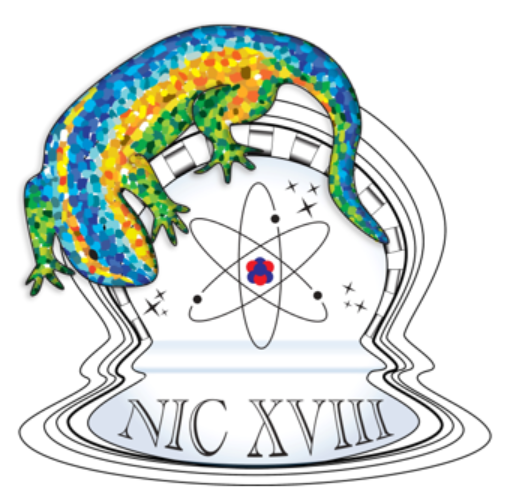https://doi.org/10.1007/s100530170044
Coherent population trapping involving Rydberg states in xenon probed by ionization suppression
Fachbereich Physik der Universität, Universität Kaiserslautern, 67663 Kaiserslautern, Germany
Corresponding author: a halfmann@physik.uni-kl.de
Received:
7
May
2000
Revised:
25
June
2001
Published online: 15 October 2001
We report the observation of pronounced coherent population trapping and
dark resonances in Rydberg states of xenon. A weak two-photon coupling with
radiation of  nm is induced between the
nm is induced between the 
 ground state of xenon and state
ground state of xenon and state ![$5p^{5}6p[1/2]_{0}$](/articles/epjd/abs/2001/11/d01100/d01100_tex_eq4.png) , leading to
(2+1) resonantly enhanced three-photon ionization. The state
, leading to
(2+1) resonantly enhanced three-photon ionization. The state
![$ 5p^{5}6p[1/2]_{0}$](/articles/epjd/abs/2001/11/d01100/d01100_tex_eq5.png) is strongly coupled by radiation with
is strongly coupled by radiation with  nm to
nm to ![$5p^{5}ns[J_{\rm C}]_{1}$](/articles/epjd/abs/2001/11/d01100/d01100_tex_eq7.png) or
or ![$5p^{5}nd[J_{\rm C}]_{1}$](/articles/epjd/abs/2001/11/d01100/d01100_tex_eq8.png) Rydberg states with
principal quantum numbers n in the range
Rydberg states with
principal quantum numbers n in the range  and with the
rotational quantum number of the ionic core
and with the
rotational quantum number of the ionic core  or
or  . The
ionization is monitored through observation of the photoelectrons with an
energy resolution
. The
ionization is monitored through observation of the photoelectrons with an
energy resolution  meV which is sufficient to distinguish
the ionization processes into the two ionization continua. Pronounced and robust
dark resonances are observed in the ionization rate whenever
meV which is sufficient to distinguish
the ionization processes into the two ionization continua. Pronounced and robust
dark resonances are observed in the ionization rate whenever  is tuned to
resonance with one of the ns- or nd-Rydberg states.
The dark resonances are due to efficient population trapping in the
atomic ground state
is tuned to
resonance with one of the ns- or nd-Rydberg states.
The dark resonances are due to efficient population trapping in the
atomic ground state 
 through the suppression of excitation of the
intermediate state
through the suppression of excitation of the
intermediate state ![$5p^{5}6p[1/2]_{0}$](/articles/epjd/abs/2001/11/d01100/d01100_tex_eq4.png) .
The resolution is sufficient to resolve the hyperfine structure of the ns-Rydberg levels for
odd xenon isotopes. The hyperfine splitting does not vary
significantly with n in the given range. Results from model
calculations taking the natural isotope abundance into account are in
good agreement with the observed spectral structures.
Pronounced dark resonances are also observed when the dressing radiation
field with
.
The resolution is sufficient to resolve the hyperfine structure of the ns-Rydberg levels for
odd xenon isotopes. The hyperfine splitting does not vary
significantly with n in the given range. Results from model
calculations taking the natural isotope abundance into account are in
good agreement with the observed spectral structures.
Pronounced dark resonances are also observed when the dressing radiation
field with  is generated from a laser with poor coherence
properties. The maximum reduction of the ionization signal clearly exceeds
50% , a value which is expected to be the maximum, when the dip is caused
by saturation of the transition rate between the intermediate and the
Rydberg state due to incoherent radiation. This work demonstrates the
potential of dark resonance spectroscopy of high lying electronic states of
rare gas atoms.
is generated from a laser with poor coherence
properties. The maximum reduction of the ionization signal clearly exceeds
50% , a value which is expected to be the maximum, when the dip is caused
by saturation of the transition rate between the intermediate and the
Rydberg state due to incoherent radiation. This work demonstrates the
potential of dark resonance spectroscopy of high lying electronic states of
rare gas atoms.
PACS: 42.50.Hz – Strong-field excitation of optical transitions in quantum systems; multi-photon processes; dynamic Stark shift / 32.80.Rm – Multiphoton ionization and excitation to highly excited states (e.g., Rydberg states) / 32.10.Fn – Fine and hyperfine structure
© EDP Sciences, Società Italiana di Fisica, Springer-Verlag, 2001







